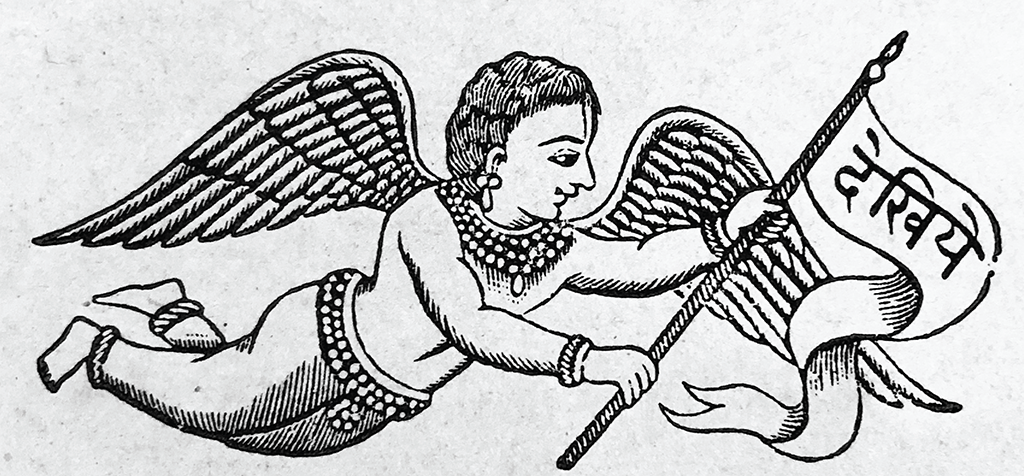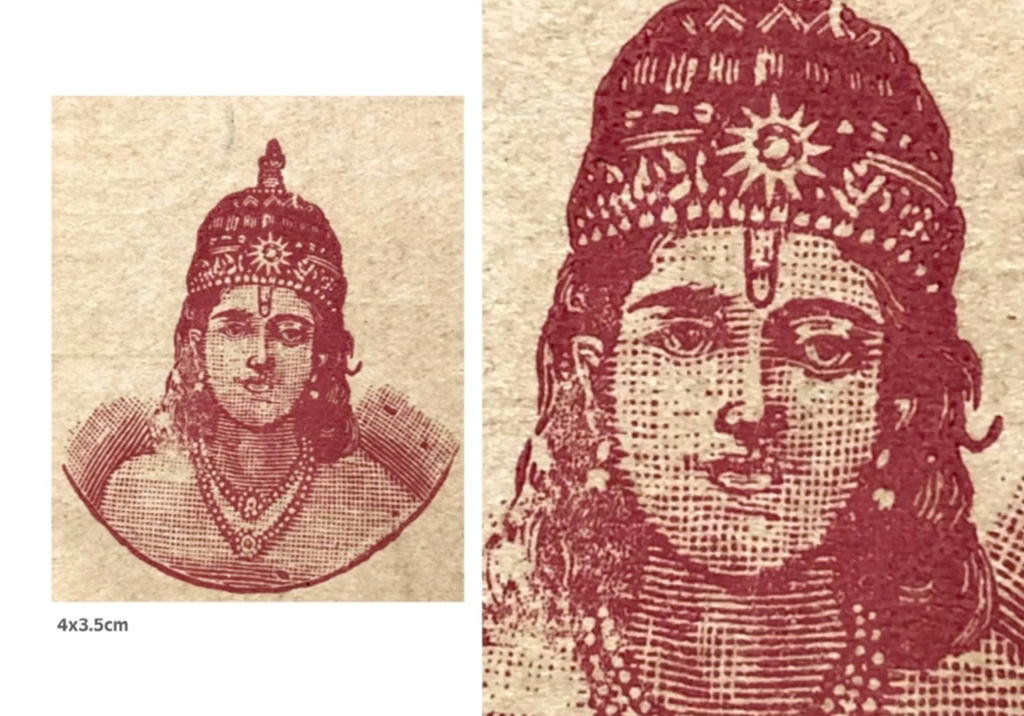Zenab Bastawala—Type Specimens: A Microscopic View of Assorted Metal Sorts During Colonial India
 Fri. Nov. 6 | What is more enticing, more alluring than catalogs? Who among us hasn’t mesmerized by the wonders in vintage printing catalogs and type specimen books?
Fri. Nov. 6 | What is more enticing, more alluring than catalogs? Who among us hasn’t mesmerized by the wonders in vintage printing catalogs and type specimen books?
Zenab Bastawala, who teaches typography at the Srishti Manipal University, in Bangalore, India, took Awayzgoose conference participants on a delightful tour of specimens from Indian foundries that spanned the latter days of colonial rule. Using her online presentation to full advantage, participants examined the specimens as Zenab paged through, making observations and pointing out features. The specimens come from her personal collection, accumulated in the way of many of us, a combination of serendipity and intrepid seeking, which she recounted.
One of the most striking features of these specimen books was that they look a great deal British and American in terms of their presentation and layout because of the colonial influences in India. Their uniqueness, and indeed charm, is in the presentation, in that same format, of non-latinate typefaces and intrinsically Indian graphics in cuts and electrotypes. The very Western presentation was probably meant to convey a sense of substance and gravitas to their original target customers. To our eyes, they are a kind of kaleidoscope view of exotic forms displayed alongside more familiar characters, all set in recognizable frames.
Zenab looked in some detail at the evidence the specimens provide of typographical experimentation, particularly in the Indic types. She also examined how latinate types were “adopted” by the Indian foundries with vernacular names that would resonate with their customers, naming, for example, fonts for popular politicians and freedom fighters of the time.
Zenab addressed how she incorporated the specimens in teaching typography and letterpress and remarked on the enthusiastic reaction the catalogs elicit from students. Her collection will, over time, be digitized, providing even more opportunities for students to interact with these marvelous documents.



